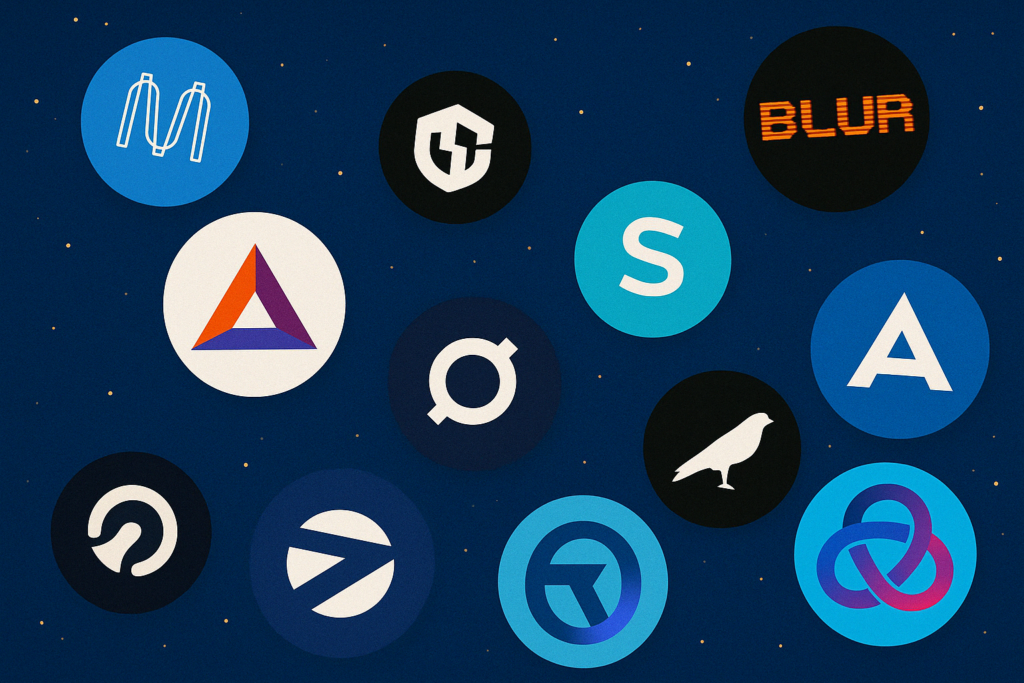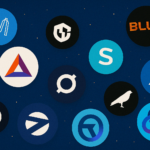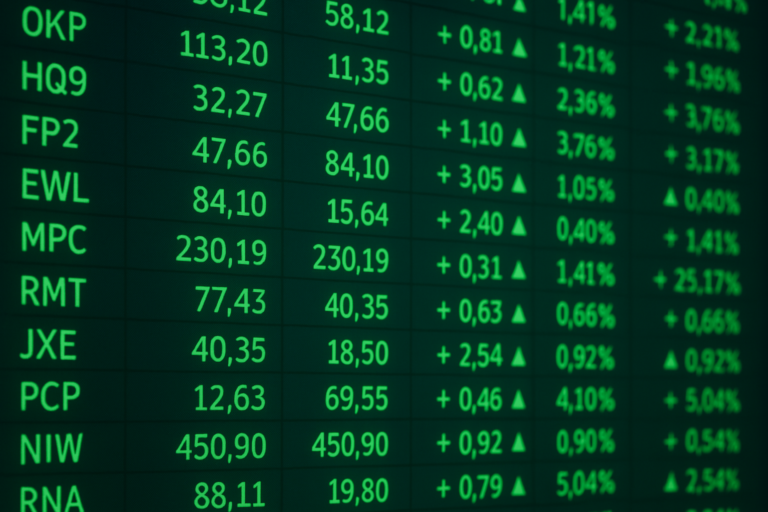
Mina Protocol, Safe, Blur, Synthetix, Kusama, Astar Network, EigenLayer, OriginTrail, ZetaChain, Basic Attention Token.
The cryptocurrency market is filled with thousands of tokens. While many projects are speculative or even outright scams, there are hidden gems that combine real-world utility, strong teams, and transparent tokenomics. In this article, we explore 10 of the most promising cryptocurrencies, each showing serious potential for growth. Investing in Altcoins 2025 could yield significant benefits.
1. Mina Protocol (MINA)
Mina is dubbed the world’s lightest blockchain, maintaining a constant size of just 22 KB, regardless of the number of transactions. Mina aims to make blockchain truly accessible by allowing anyone to run a node on basic hardware. The protocol is also enabling privacy-preserving smart contracts. With a public team, VC backing, and broad token distribution via CoinList, Mina stands out as a scalable and decentralized alternative in the blockchain ecosystem.
2. Safe (SAFE)
Previously known as Gnosis Safe, Safe is the most widely used multisig wallet infrastructure in Web3. It enables secure management of digital assets, especially for DAOs and enterprises. The project spun off from Gnosis with a clear governance roadmap through SafeDAO. With over $40 billion in assets secured and a major airdrop to more than 43,000 users, Safe combines proven security with strong decentralization. It continues to serve as foundational infrastructure for hundreds of Web3 projects. It’s one to watch in Altcoins 2025.
3. Blur (BLUR)
Blur is a professional NFT trading platform that quickly overtook OpenSea in trading volume. Blur is known for its advanced analytics, faster execution, and reward systems. The $BLUR token was widely distributed via airdrop to active NFT users, helping to build one of the strongest communities in the NFT space. With support from top-tier VCs like Paradigm and a transparent, doxxed founder, Blur is not just a marketplace but a serious platform for the NFT economy.
4. Synthetix (SNX)
Synthetix is one of the original DeFi protocols, allowing users to mint synthetic assets that mirror real-world commodities, currencies, and stocks. Founded by Kain Warwick, Synthetix has a history of innovation, including popularizing yield farming. Its governance has transitioned to decentralized DAOs, and the SNX token is broadly distributed among stakers. With the launch of perpetual futures and the Infinex trading interface, Synthetix is positioning itself as a next-generation decentralized trading platform.
5. Kusama (KSM)
Kusama serves as the experimental “canary network” for Polkadot, designed by the same team. It allows developers to test new features and protocols in a live environment with economic incentives. Kusama has hosted dozens of parachains and supports fast iteration cycles. The KSM token was distributed to Polkadot stakeholders via a fair drop, and governance is fully community-based. As Polkadot’s sandbox, Kusama plays a vital role in blockchain experimentation and innovation. Its developments are crucial for Altcoins 2025.
6. Astar Network (ASTR)
Astar Network is Polkadot’s premier smart contract hub, supporting both WASM and EVM environments. Founded by Sota Watanabe, Astar secured a parachain slot through a highly participatory crowdloan campaign. It is one of the most active parachains on Polkadot and has a $100M ecosystem growth fund. With strong developer engagement, seamless multi-VM support, and community-first token distribution, Astar is a major driver of smart contract adoption in the Polkadot ecosystem. It’s definitely one to consider for Altcoins 2025.
7. EigenLayer (EIGEN)
EigenLayer is a restaking protocol on Ethereum that allows stakers to secure multiple networks simultaneously. Founded by Professor Sreeram Kannan, the project has seen over $15 billion in ETH restaked before even launching its token. EigenLayer’s tokenomics favor decentralization, with 45% of its token supply allocated to the community via stakedrops and incentives. Its utility in enhancing Ethereum security while offering stakers additional yield makes it one of the most anticipated infrastructure layers in Web3.
8. OriginTrail (TRAC)
OriginTrail is building a Decentralized Knowledge Graph (DKG) that is already being used in supply chains, pharma, and government applications. The team is known for its enterprise focus and real-world partnerships. The TRAC token powers the DKG and ensures data integrity. With collaborations including the GS1 standards organization and entry into NVIDIA’s AI accelerator program, OriginTrail is pioneering Web3 applications for verifiable data and AI. Tracking the progress of Altcoins 2025, OriginTrail remains a standout.
9. ZetaChain (ZETA)
ZetaChain is a new Layer-1 blockchain designed to be omnichain, capable of communicating directly with other blockchains including Bitcoin and Ethereum without bridges. Its team includes veterans from Coinbase and support from Google Cloud. ZetaChain has seen massive engagement during its testnet phase, with over 4.8 million wallets created. Its ZRC-20 standard allows for native cross-chain smart contracts, making it a pioneer in blockchain interoperability.
10. Basic Attention Token (BAT)
BAT powers the Brave browser, which rewards users for viewing privacy-respecting ads. BAT has wide distribution thanks to its ad rewards model and is supported by millions of monthly active users. With ongoing integrations including DeFi, AI, and DEX functionality, BAT represents one of the most successful real-world applications of a utility token. As Altcoins 2025 evolve, BAT’s utility continues to grow.









